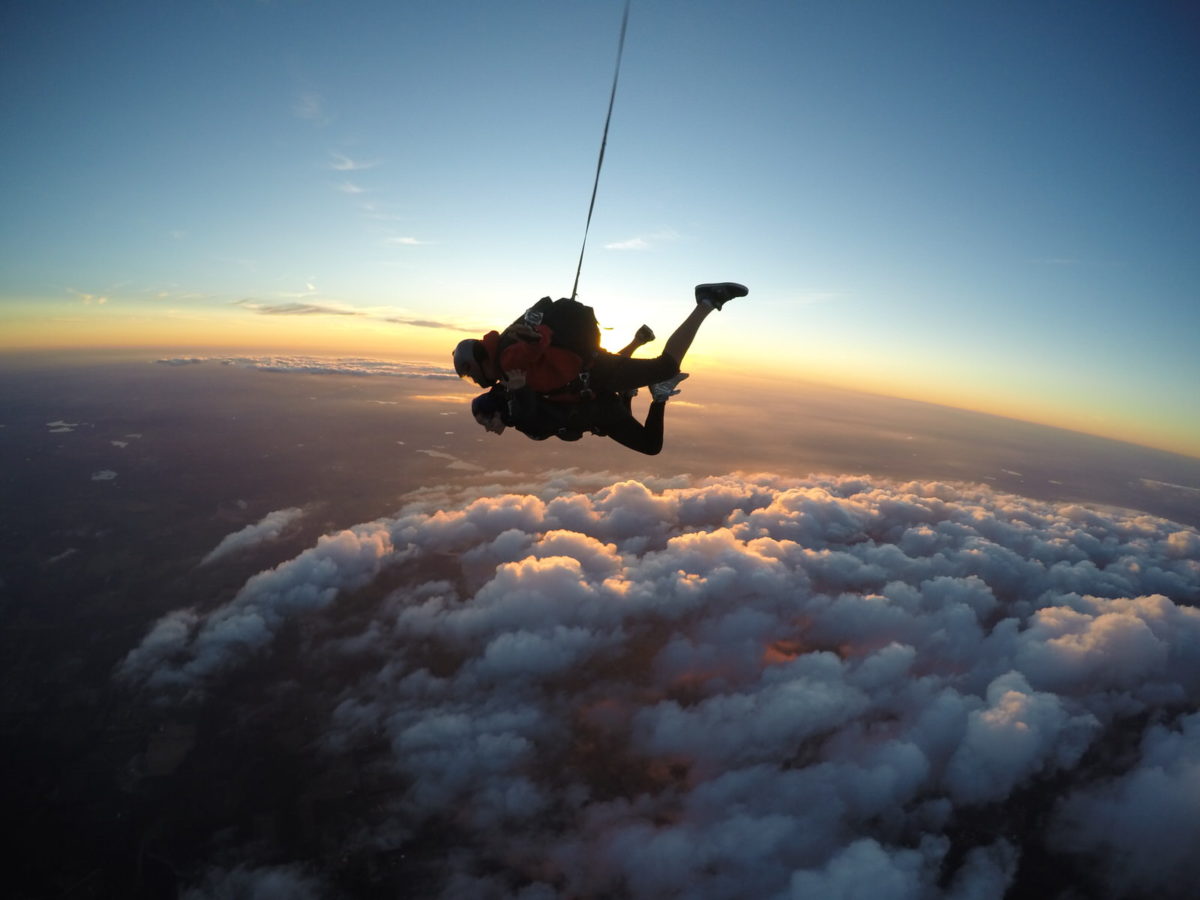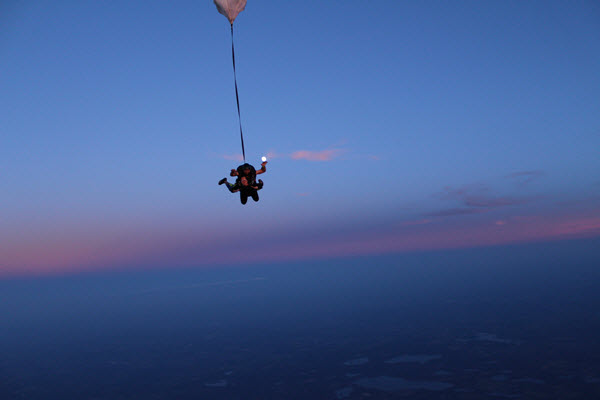- Michigan's Premier Skydiving Center
- Call Now: (517) 423-7720
Skydiving At Night
Wednesday, August 21, 2019
- Skydive Tecumseh
- 8/21/19
- 0
- General
Nighttime skydiving, for most experienced jumpers (more on that later), counts as pretty much the ultimate adrenaline rush. Why? Well: even though performing a night skydive is required to earn one’s higher-level licenses, there’s no getting around the fact that the risk quotient of a nighttime skydive is higher than that of its “normal,” well-lit counterpart. Let’s dig into that, shall we?
Defining a “Night” Skydive
A “night skydive,” according to the USPA (United States Parachute Association), is a skydive that occurs between one hour after official sunset up to one hour before official sunrise. That means that the skies might not be pitch black when the jump is made — especially because night skydives are almost always scheduled to coincide with the full moon — but the USPA and the FAA got together to determine that criteria, and it stuck: basically, jumps falling within those hours are sufficiently different from “day jumping” meaning special considerations have to be made and special equipment has to be used.

Tandem Skydiving At Night
…Is not a thing. Because of safety.
Even in the case of a very experienced skydiver, performing a night jump is a challenge. The risks of skydiving go up when vision goes down. There’s additional equipment required that’s not ideal for a tandem. The risks and symptoms of hypoxia are both elevated. Finally, the environment of a night jumps is totally different from that of a daytime skydive. For a business that is actively working to mitigate risk, offering tandem skydives at night is not a tenable move.
Night skydiving requires its participants to be experienced jumpers. Namely, they need to sport a USPA “B” (or higher) license. (Flashing a B-license means that the skydiver in question has completed at least 50 successful solo skydives and demonstrated mastery in landing accuracy and freefall maneuvers, completed a water landing practicum, and passed a written exam. Whew.) By the time that skydiver gets on the plane, they’ve been very thoroughly briefed — and kitted out with a light-up altimeter, a flashlight, and a whistle, generally with glow sticks or LEDs fastened securely to every major surface. It’s a big deal.
Finding the Landing Area At Night

Night skydiving looks very different from daytime skydiving from altitude. To help make sure that a dropzone’s skydivers aren’t spread all over the state by the time jump run is done, dropzones make special arrangements to help skydivers find the landing area. Often, that little “over here, guys!” is made of a line of cars, each with its headlights on, all pointing to illuminate the landing area with a cheerful glow. Spoiler: it’s still a challenge to find that landing area when you’re hanging your head out the aircraft door in the middle of the night.
Let’s make no bones about it — night skydiving is a peaky lil’ challenge for every experienced skydiver who takes it on. And why shouldn’t it be? Trying something new and outside your comfort zone is bound to have that effect. Speaking of which: Why not get started on your path to night skydiving with your very first tandem jump? We’d love to be part of that journey, contact us today to learn more!

Went and did my first jump with Skydive Tecumseh and t was awesome! My dad had been telling me for 10 years he was going to take me and never did. So finally for his 50th birthday, I took him! It was an amazing experience all thanks to the staff at Skydive Tecumseh! They were friendly, helpful, and totally laid back! They definitely knew how to make a first-time jumper feel at ease! I would highly recommend them and will definitely be going back again!
Stephanie Christensen
Copyright © 2025, Skydive Tecumseh, All Rights Reserved.
DropZone Web Design & Marketing by Beyond Marketing, LLC